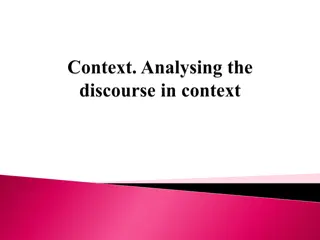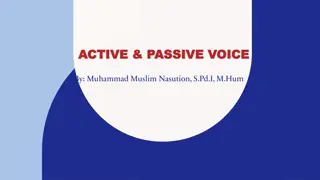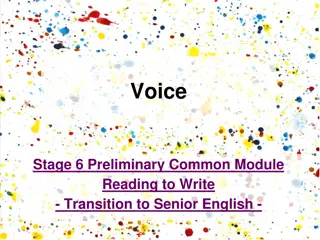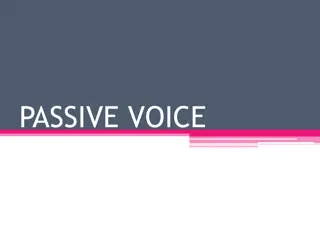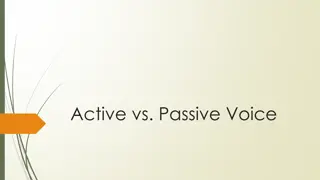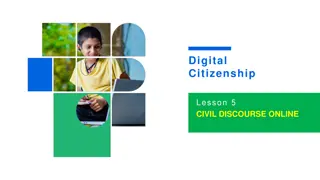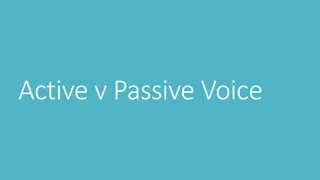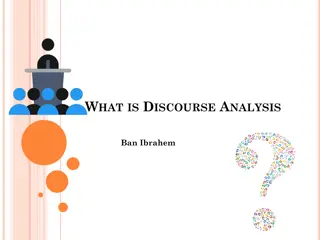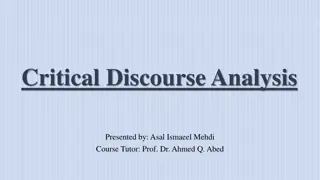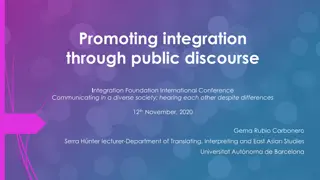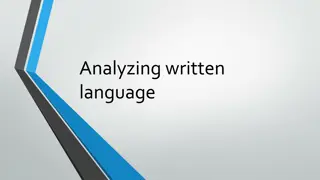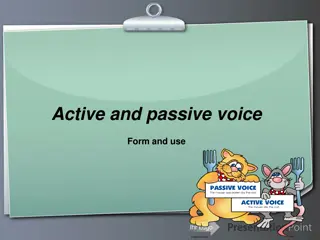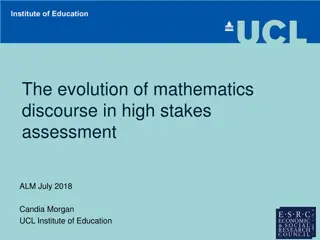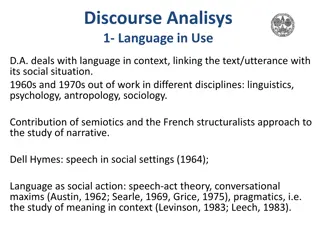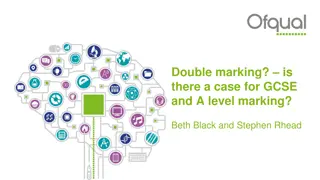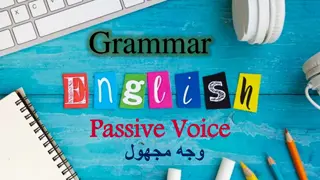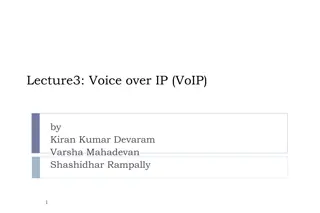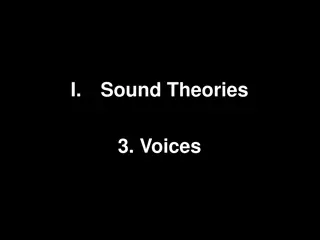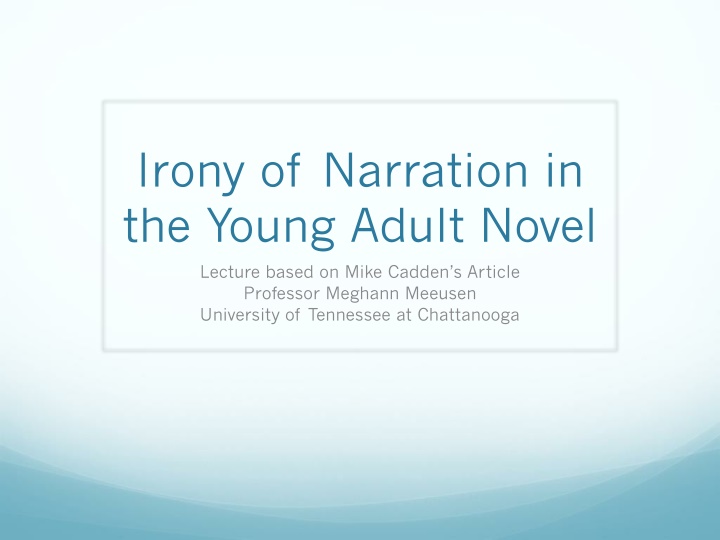
Irony in Young Adult Novels: Unveiling the Narration Techniques
Delve into the complexities of irony within young adult novels, exploring how narration reveals implicit and explicit ideologies as discussed by scholars like Mike Cadden and Peter Hollindale. Discover how authors use the adolescent voice to convey messages, the inherent irony in simulating authenticity, and the ethical responsibility of ironists like Linda Hutcheon.
Download Presentation

Please find below an Image/Link to download the presentation.
The content on the website is provided AS IS for your information and personal use only. It may not be sold, licensed, or shared on other websites without obtaining consent from the author. If you encounter any issues during the download, it is possible that the publisher has removed the file from their server.
You are allowed to download the files provided on this website for personal or commercial use, subject to the condition that they are used lawfully. All files are the property of their respective owners.
The content on the website is provided AS IS for your information and personal use only. It may not be sold, licensed, or shared on other websites without obtaining consent from the author.
E N D
Presentation Transcript
Irony of Narration in the Young Adult Novel Lecture based on Mike Cadden s Article Professor Meghann Meeusen University of Tennessee at Chattanooga
Ideology Peter Hollindale s: even if beliefs are passive and unexamined, and no part of any conscious proselytizing, the texture of language and story will reveal them and communicate them" (12). Louis Althusser uses the term obviousness -- so pervasive is ideology in its constitution of subjects that it forms our very reality and thus appears to us as true or obvious. . Roberta Seelinger Trites: "unstated explicit ideologies left as inferences for adolescent readers to draw imply a different set of power differentials between the text and readers that explicit ideologies stated directly for a reader s benefit" (70).
Implicit and Explicit Implicit ideology is when an author is passing on cultural beliefs without even being aware of doing so. It is a presentation of the normal or expected way of life (for the dominant culture). Explicit ideology is the theme or message of the text, more purposefully put forth by the author. In young adult texts, these messages are frequently put forth through the technique of an adolescent narrator, even though the writer him/herself is an adult.
Irony of Narration Novels constructed by adults to simulate an authentic adolescent s voice are inherently ironic because the so- called adolescent voice is never and can never be truly authentic. This matters because the narrative situation in question involves social power relations that are fundamentally different from those between adults. Cadden stresses that it is crucial that (since every adolescent text is ironic in that it was written by an adult) authors make clear that they are being ironic.
Linda Hutcheon- Ethics of Irony Linda Hutcheon identifies the basic ethical responsibility of the ironist as the responsibility to guarantee the comprehension of irony (and the avoidance of misunderstanding). One way of doing so is offering multiple and ideologically contrasting perspectives in the narrative, or even making visible narrative unreliability.
Authorial Responsibility The YA novelist often not only speaks from the position of the young adult but also often believably presents that incomplete growth to awareness without challenge from within the text . intentionally communicates to the immature reader a single and limited awareness of the world that the novelist knows to be incomplete and insufficient. Should the writer help the reader to recognize the contestability of any immature consciousness in the narrative? Should the condition for staying behind the narrative mirror be that the author reflect more back to the young adult reader than just an uncontested version of him- or herself?
Vertical and Horizontal The vertical relationship vertical relationship (top down), where the author talks down to the reader (age and power relationship) versus a horizontal relationship horizontal relationship where two young people in the texts (characters) are in equally balanced dialogue with each other. It becomes important, then, that there be equal (or horizontal) power relations between the major characters within the text so that the young adult reader has the power to see the opposing ideologies at play.
Single Voice Discourse Each text provides a single voice that is so highly confident that it is ultimately unassailable within the text. These books and speakers provide only one argument or position on a matter, and most important, they fail to provide within the text the tools necessary to reveal the contestability of these immature perspectives to the equally immature reader.
Double Voice Discourse Bakhtin believed the most ethical form of narration to be double-voiced discourse .The dialogic or double-voiced text represents voices as equal and provides alternative interpretations that offer, in their aggregate, no single and final answer for the reader. This can be achieved by an alternating narrator, wherein several character s perspectives are provided. Or, even with one narrator, if several different perspectives are offered by giving voice to multiple characters or when multiple characters thoughts are given expression. Also, a text doesn t have to have two characters in debate, as sometimes the dialogue is between the reader and the text, there is space for the reader to enter the discourse.
Complication However, if the text's/narrator/implied author's ideology is clear regarding all matters including how and what to think of various ideas, concepts, or topics, then this isn t necessarily double voice discourse it is single voice discourse. Authors may find this single-voicedness necessary because the ideology presented is itself counter- cultural and therefore always already in dialogue with mainstream culture. But we must pay attention to the ideology present within the text itself.
Potential of YA Literature The YA author can offer the young adult reader significant art while still providing that reader the tools for identifying potentially debilitating world views in the text. Double-voiced discourse, achieved through providing multiple and equal YA consciousnesses and a clearly unreliable singular YA consciousness, provides the YA audience the tools to grow as readers. And in the cases when texts do not themselves provide young adult readers with the tools necessary to recognize irony, teachers can help students from falling prey to textual and contextual irony; by doing so, teachers become more ethical themselves as well as better teachers of criticism.
Questions Which of the texts we ve read this semester are more single-voice discourse and which include some elements of double voice discourse? This is something we will continue to track as we read more YA novels. Ask yourself: Whose voices are being presented in the text? Do all of these voices support the same ideologies? Are their multiple viewpoints presented and how?

